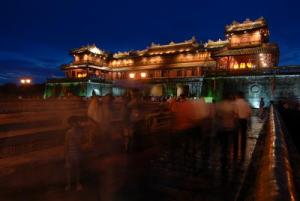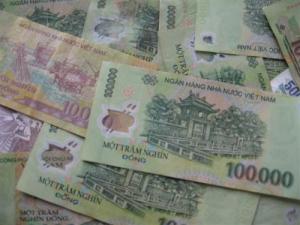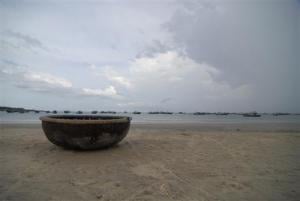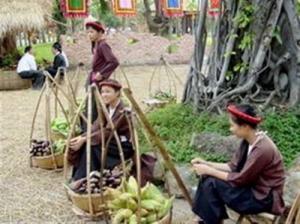Severe Drought Posing Threat to Vietnam and Neighbor's Livelihoods
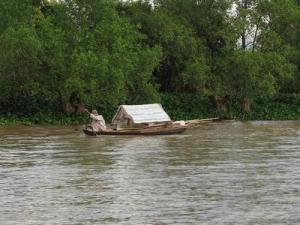
As severe drought had spread across Asia, the Mekong River’s water levels are now on its record-low causing seawater to creep into the lower river’s Delta area, flooding the fields with salt. Experts have reported that salinity had extended 30-40 kilometers upstream from the coast, salinizing thousands of hectares of farmlands that rely on the 4,500 kilometer-long river for distributaries.
Severe salt penetration had moved further inland into the basins of Can Tho city and the provinces of Tien Giang, Ben Tre, An Giang and Kien Giang. Added concern was seen when the water levels of An Giang river fell to 10 centimeters below average. The widespread salinization had already damaged vast areas of farm soils, leaving tens of thousands who depend on waters for livelihoods scampering for adequate supplies.
With the Mekong Delta producing half of the country’s annual rice output, this drought, said to be the worst in the past half-century, spells huge disaster for farmers in the region and for the hundreds of millions others relying on the river’s stretch for fishing and other forms of trade. With the soil’s fertility largely threatened, growing crops in the Delta had become a huge challenge nowadays. As problems are likely to worsen through the coming months, locals have now resorted to buying fresh water both for household consumption and for supplying their rice paddies at 2,000 VND for 40-liter can.
Blaming the Dams
The drought which had greatly hurt numerous villages in Vietnam, as well as of its neighbors, had led to a series of debates over the vital resource and the effects of economic development has on the river flow. Natural disasters are often blamed on nature, but the present situation affecting several countries in the region have had a lot of fingers now pointed to China. At a recent conference on the Mekong River’s environment held in Can Tho, scientists agree that the collection of upstream hydropower dams are the biggest threats to what is considered as one of the world’s major rivers.
The Chinese dams’ huge reservoirs are capable of storing up to 18 billion cubic meters of water and believed to have had a big hand in depleting Mekong’s flow during the recent years. According to an official of the International Water Management Institute, these dams are using up 16 percent of the river’s annual flow while eliminating between 700,000 to 1.6 million tons of fish per year, causing huge shrinkage in fish catch reported by thousands of fishermen. China’s fourth hydroelectric dam is on its way to completion, and along with the existing and continued construction of other dams in the area, has further squeezed the river. The choked water supplies are transporting limited silt to the paddies, leaving Vietnamese farmers to invest more in fertilizers.
A research fellow at the Institute of Southeast Asian Studies in Singapore, Michael Richardson, claimed that China’s hydroelectric projects have altered Mekong’s natural river flow. For Vietnam, Cambodia, Thailand and Laos, which are situated on the river’s lower basin, having 60 million of their people depending on the river for food, water and transportation is a growing concern and is a reason enough to press whoever is responsible for this chain of problems.
A Chain of Problems Indeed
Having ruined the farmer’s crops, the severe drought had brought so much misery to some of the Vietnam’s poorest villages. Similarly, communities throughout its close neighbors, Thailand, Laos and Cambodia have been similarly hurt by the Mekong’s biggest drop in water levels. Apart from the impact in agricultural, fishing industry and drinking supplies, the current water levels on the river’s mainstream have put a halt to tour operations between Houiesay and Luang Prabang in Laos.
With some areas nearly dry, 21 cargo boats have reportedly been stranded because of the shallow river water in southern China while barges, ferries and other heavy boats are already prevented to set off the water. With operations unable to run as normal, regional trade is at stake. There's still about a month of dry season ahead, yet, parts of the Mekong River are already close to completely drying up.
Rounding up the Problem
Compared to what was considered among the most extreme droughts which occurred in the stations of Chiang Saen, Chiang Khan, Luang Prabang, Vientiane and Nong Khai in 1992 and 1993, current levels measure way much lower especially in northern Laos and Thailand. Such statistics are the lowest seen since the past decades.
The Mekong River Commission (MRC), comprised of Laos, Thailand, Vietnam and Cambodia, have expressed intentions to discuss with China the possibility of releasing water from their reservoirs. There are eight existing or planned dams on China’s stretch of the mainstream Mekong. Though according to Jeremy Bird, MRC secretariat Chief executive officer, the commission is yet to establish the tie between Mekong’s water levels and those dams. However, he also believe that once the hydropower projects are in service, they could deliver about 30-40 percent more of water flow which could be beneficial during the dry months.
But then, growing pressures from countries in the lower basin have solicited China’s cooperation and is said to join the summit to be held in Thailand on April. With the nations coming together to discuss water management in the delta, they are expecting China to walk a fine line and take responsibility for the water problems downstream. Countries are further warned that any plans to put up mega-dams on top of the already running and those currently in construction, will soon displace thousands of people, and even harm the water’s endangered species.
With the flow continuously moving below average, communities along the affected areas are advised to take steps in reducing their water consumption. The nations yet have to wait what will make out of next month’s summit. But hopefully, they will arrive at a common ground and retain control of the Mekong’s upstream water. Undeniably, all efforts are needed to preserve the region’s most important river.





